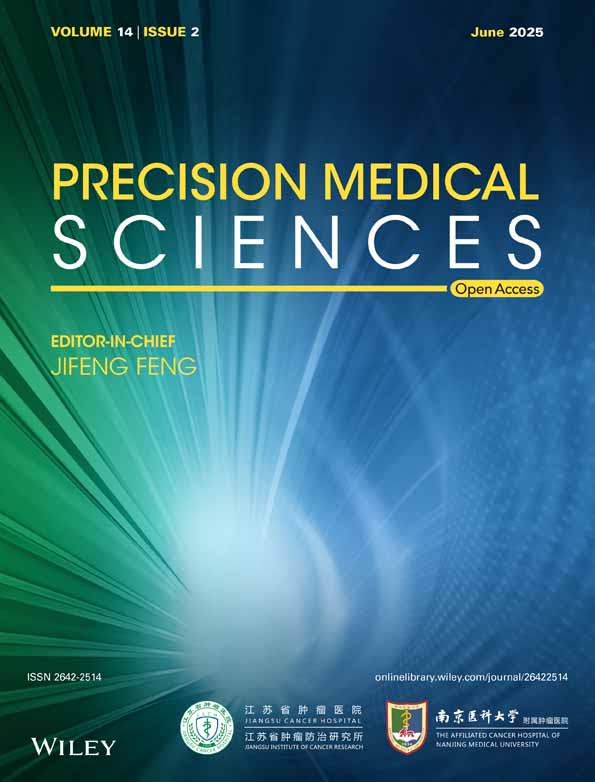Letter to the editor regarding the article, “Metagenomic and transcriptomic analysis reveals crosstalk between intratumor mycobiome and hosts in early-stage nonsmoking lung adenocarcinoma patients”
We are writing in response to the recent article “Metagenomic and Transcriptomic Analysis Reveals Crosstalk Between Intratumor Mycobiome and Hosts in Early-Stage Nonsmoking Lung Adenocarcinoma Patients” by Yaohui Sun, Zhiming Gan, Shijiancong Liu, Sheng Zhang, Wei Zhong, Jian Liu, Xiuting Huang, Wei He, Hongcheng Zhong, and Qingdong Cao with great interest.1 The study focuses on the intratumor mycobiome and its interaction with the host in early-stage nonsmoking lung adenocarcinoma patients. The highlights would include the novel focus on fungi rather than bacteria, identifying specific fungal species linked to the disease, and the multi-omics approach combining metagenomics and transcriptomics. They found immune modulation and potential biomarkers, which are significant for diagnostics and therapy.
Although efforts were made to select a targeted and reasonable cohort of participants, several limitations affect the generalizability and power of the study. On the one hand, small samples can lead to overfitting in statistical models and reduce the ability to detect true effects. On the other hand, environmental and dietary factors may influence the distribution of fungal communities, but these factors were not strictly controlled by the study participants.
The limitations of detection techniques have long been a challenge in the study of fungal DNA. Fungal DNA in tumors is scarce, risking contamination or false positives. Reference databases for fungal genomes are less robust than bacterial ones, complicating accurate taxonomic identification.
This study suggested future research on the causal relationships between specific fungi and tumor progression, as well as the potential for manipulating the mycobiome as a therapeutic strategy. Similarly, longitudinal studies could also be conducted to understand how the mycobiome evolves with disease progression and treatment. However, the study provides a “snapshot” of the mycobiome and transcriptome at a single time point. This approach limits the ability to establish causality (i.e., whether fungal dysbiosis precedes tumor initiation or arises as a consequence of it) or track dynamic changes in fungal communities during critical phases such as treatment (e.g., chemotherapy, immunotherapy) or disease progression. A longitudinal study design involving serial sampling of patients from pre-diagnosis through treatment and follow-up could clarify whether specific mycobiome shifts are associated with clinical outcomes such as metastasis, recurrence, or therapeutic resistance.
Furthermore, we suggest introducing bacterial genomes. Investigating the interaction between bacterial and fungal genomes in non-smoking lung adenocarcinoma patients will contribute to a more thorough and comprehensive understanding of the disease. Bacteria and fungi often compete or synergize, and Bacterial metabolites (e.g., short-chain fatty acids) can influence fungal growth and host immunity. A tumor-suppressive bacterial taxon (e.g., Bifidobacterium) might counteract pro-tumor fungal effects, but this interplay is unaddressed. Bacterial–fungal crosstalk in cancer is a dynamic interplay of competition, cooperation, and host modulation. Understanding these interactions could unlock novel biomarkers and therapies for cancer prevention and treatment.
While this study revealed connections between tumor–fungi and the hosts in early-stage nonsmoking lung adenocarcinoma patients, the extent to which these connections are valid remains unknown. The study is limited by a lack of functional experiments to validate proposed mechanisms, such as the potential impact of fungi on immune pathways. The role of fungi in tumor biology remains speculative without causal evidence, and fungal biomarkers may not provide additional diagnostic or prognostic information beyond existing tools.
In conclusion, this is a commendable study that makes a significant contribution by profiling fungal communities and host gene expression, suggesting specific fungi may influence tumor biology and immune responses. We hope that our recommendations are constructive and will add valuable insights.
CONFLICT OF INTEREST STATEMENT
The author declares no conflicts of interest.




